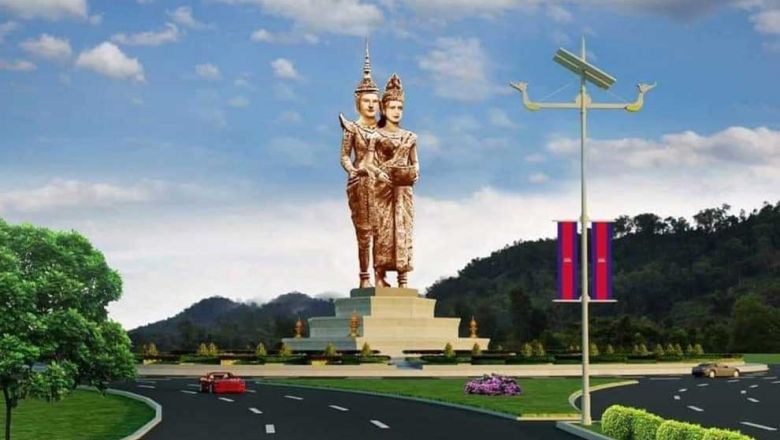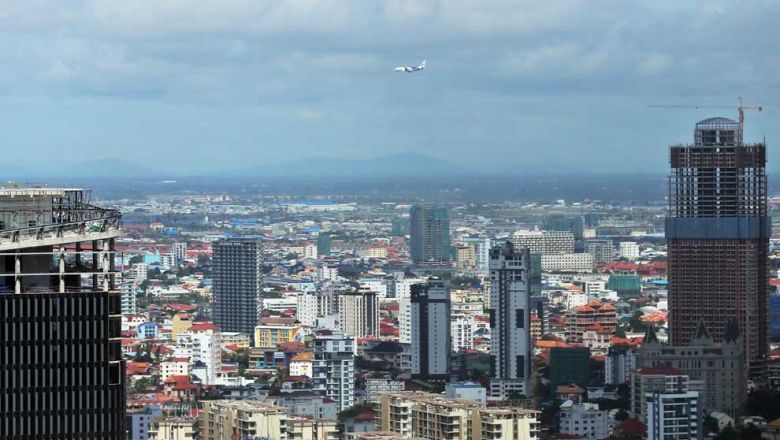GDP growth maintained at 4.5% for 2022: WB
GDP growth maintained at 4.5% for 2022: WB
Projection for Cambodia’s economic growth has been maintained at 4.5 per cent by the World Bank (WB) under its baseline scenario despite global demand slowdown, thanks to the rollback of travel restrictions prompted by a high national Covid-19 vaccination rate.

On the flipside, a downside scenario puts growth at 3.8 per cent because of the deterioration in domestic economic conditions caused by rising inflation, as external factors worsen on the back of slow external demand.
According to the East Asia and Pacific Economic Update, published by the Washington DC-based international bank, recovery is expected to be driven by domestic economy and agricultural exports.
That being said, Cambodia’s export-oriented manufacturing will likely face headwinds in the coming months, with a less favourable external environment that is being reshaped by cyclical slowdown in the US and structural slowdown in China.
Furthermore, hikes in energy and food prices due to the conflict in Ukraine is expected to reduce the pace of poverty reduction as it weighs on household budgets.
In response to questions by The Post at a media conference, WB East Asia and Pacific chief economist Aaditya Mattoo said the current surge in global oil price would result in negative impacts on Cambodia’s inflation rate.
Cambodia is one of the countries which is significantly dependent on liquefied natural gas (LNG) imports – nearly 10 per cent of gross domestic product (GDP) constitutes oil imports.
“So, one immediate risk is that the spike in [commodity] prices will continue and would hurt economic activities and squeeze consumers. For that reason, it would be a significant challenge to growth prospects and poverty reduction,” Mattoo said.
At the same time, he noted that Cambodia has significant external financing needs and there is a risk at the “other dimension of this crisis”, flowing from high interest rates resulting in large current account deficit and financing risk.
“Financing risk which is also a shock might be a bigger issue.”
“Inflation at the moment is less than four per cent but there is also a risk of higher inflation which might impact economic stability that Cambodia has so far managed,” he said.
On a lighter note, Mattoo lauded the fact that Cambodia has seen a significant revival of exports as well as a remarkable vaccination rate.
Early February this year, Minister of Economy and Finance Aun Pornmoniroth announced that GDP growth had been pegged at 5.6 per cent for 2022, which reflected progress towards attaining herd immunity against coronavirus infection.
Cambodia’s vaccination rate ranks among the best globally which has prompted the government to allow the full restoration of socio-economic activity.
Pornmoniroth also emphasised that for Cambodia and the rest of the world, 2020 and 2021 were difficult years marked by the pandemic and socio-economic challenges.
Meanwhile, the WB said in the medium term, the economy is expected to “trend back to potential, growing at around six per cent”.
“The new Law on Investment, the Cambodia-China and Cambodia-Republic of Korea free trade agreements and the Regional Comprehensive Economic Partnership are expected to help boost investment and trade in the coming years,” said the bank.
On the upside, a less persistent global shock could improve the outlook for Cambodia but negative impacts of the coronavirus on jobs and welfare are expected to continue as the services sector, especially the travel, tourism, and hospitality industries, are facing persistent headwinds.
“It is crucial to implement structural reforms embedded in the economic recovery plan to improve Cambodia’s external competitiveness.
“Addressing supply side bottlenecks by reducing costs of doing business, logistic, and energy, while eliminating rigidities in major labour market regulations that prevent a robust recovery of the job market remains key to a sustained economic recovery and job creation,” it added.














